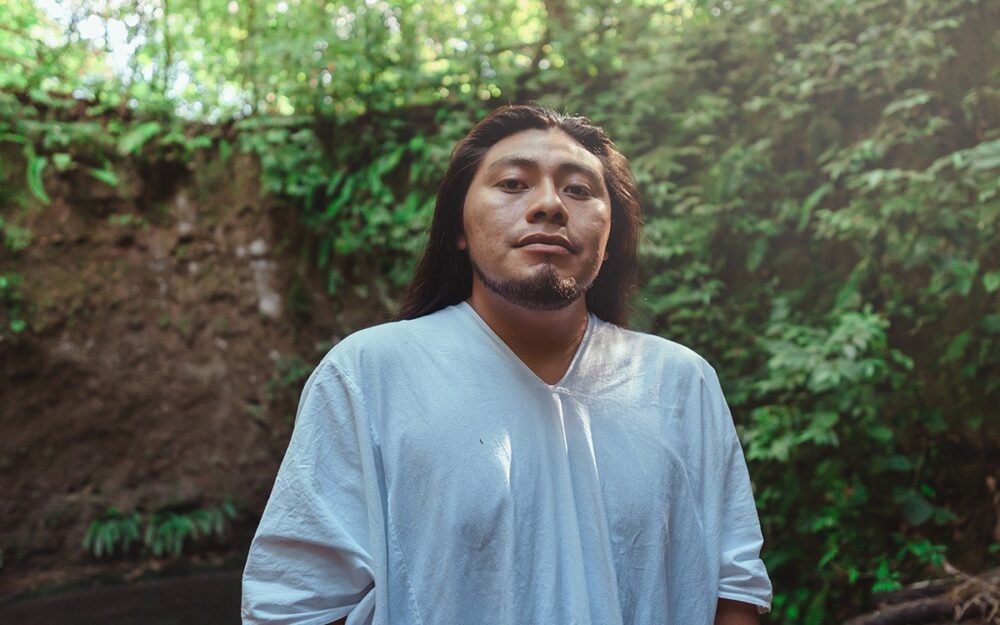
Dams and mining have long been controversial environmental matters that span continents. Recently, the US has seen an uptick in mining protests concerning labor rights and Indigenous ancestral lands. Dams have also come under scrutiny. Environmental advocates have successfully pushed for their removal in some areas, citing the destructive impact dams have on salmon migration paths and water quality degradation. As of last year, 66 dams have been removed across the US. And countries within the Amazon Basin, like Ecuador, are following suit.
The Amazon Basin spans Ecuador, Brazil, Peru, Guyana, Colombia, Bolivia, Suriname, French Guiana, and Venezuela, with myriad Indigenous and local communities depending on it for temperature regulation, drinking water, food, shelter, building materials, and transportation. Though known as the lungs of the Earth, the Amazon Basin’s ability to absorb and sequester over one billion tons of carbon emissions is falling due to rapid deforestation in Brazil. Today, the Amazon absorbs 30 percent less carbon than it did in the 1990s. And in Ecuador, the Amazon’s biodiversity is threatened by mining projects and damming that continues to exploit natural resources. Activists in Tena, Ecuador, have been coming together to speak out against these projects in ongoing protests.
The Amazon’s size and crucial role in the global climate crisis can be hard to conceptualize. But for those who have been there, it is clear that this place is its own entity—alive, vibrant, and worth fighting to protect.
The Ecuadorian Amazon and the Impacts of Mining
Just over half of Ecuador is covered by native forests—74 percent of which are within the Amazon region. This region is commonly referred to as “el Oriente” (which translates to “the East” in English) and is home to 14 different Indigenous communities whose daily lives are supported by its natural resources. They face a changing climate fueled by local challenges of deforestation, mining, and damming.
In recent years, the growth of legal and illegal mining activities has caused conflict with local and Indigenous communities over water contamination and land rights. This kind of resource extraction has led to mercury pollution and the dumping of toxic byproducts into nearby rivers. For example, in Napo, in the northeastern part of the country bordering Peru, roughly 90 percent of the rivers tested displayed toxicity. This is largely due to the increase in illegal gold mining, which has been a major cause of the dangerous water contamination.
The destruction has long been on Diego Robles’ radar. Robles is a local white-water kayaker, community member, and owner of an eco-hostel in Tena, Ecuador. “Water is the base of everything. Without water, we die. Out of all the natural resources for me, water is the main thing to protect,” says Robles in a recent video interview. Robles teaches kayaking to tourists and local children and hopes that the children will one day take on the role of river guardians.
The Impacts of Dams in the Ecuadorian Amazon
Dams concern conservationists, scientists, and locals alike because they contribute to the loss of biodiversity, disruption to river connectivity, ecosystem fragmentation, and deforestation.
Robles frequently traverses rivers in and outside of Tena and has witnessed the change due to damming in parts of the river that are not accessible to the general public by car or foot. He was the first to descend the Upper Pusuno River and, through kayaking expeditions, was able to document the evolution of destruction in the area. We often hear about the Amazon River as a single entity, but the Amazon has over a thousand tributaries, 17 of which are longer than one thousand miles. It takes people like Robles constantly monitoring in order to track the many harms to the river areas.
Newer hydroelectric dams are also adding to the Amazon’s degradation. Jorge Cedi, an ecologist who has been studying the Napo River since 2007, argues that because the Napo River is one of the largest Andean tributaries of the Amazon, altering its hydrological connectivity would negatively affect one of the most critical river systems in the basin, as well as many of the ecosystems downstream.
These dams concern conservationists, scientists, and locals alike because they contribute to the loss of biodiversity, disruption to river connectivity, ecosystem fragmentation, and deforestation.
Sign up for our free newsletters
Subscribe to NPQ's newsletters to have our top stories delivered directly to your inbox.
By signing up, you agree to our privacy policy and terms of use, and to receive messages from NPQ and our partners.
Ecuadorians Are Fighting to Protect Their Rivers
In January of 2023, activists organized a multiday protest just outside of Tena, Ecuador, in support of protecting the Pusuno River that lies west of the Napo River. Each day protesters spoke out against the harm caused by the dams in their area, built by Constructora Villacreces Andrade, an Ecuadorian construction company. “We’re not here asking for money. Really, we’re asking for life,” said Robles. When CVA originally started to plan its hydroelectric dam operations, the company made many promises to the community about how they would directly benefit. Instead, community members have been left without access to their land, a lack of clean drinking water, destroyed riverbeds, and disrupted aquatic ecosystems.
Robles reported that CVA representatives allegedly drugged an Indigenous elder who doesn’t write or speak Spanish to obtain copies of his fingerprints to sign off on documents that released land ownership rights to CVA for damming purposes. This is what sparked the protests. With this action, community members were hoping to get the rights to their land back from CVA, which would, in turn, give them access to drinking water again. “It’s crazy because they are asking for permission to enter their own land,” commented Robles.
The protests died down for a period as the locals worked to come to an agreement with CVA, but they recently picked back up in April 2023 when no formal agreements were reached. Despite all the efforts to protect the water, the future doesn’t look bright for Amazonian rivers in Ecuador. Several parks and reserves have been created to protect precious ecosystems, but it’s not enough. It is often difficult to protect Indigenous lands outside of government-identified parks, especially when going up against companies with deep financial backing.
“I think it is difficult to fight or debate with a large entity such as a hydroelectric company. The Indigenous community is often alone; they feel intimidated by them,” says architect and artist Michelle Ayala, who attended the protests. She believes that the Indigenous community needs a strong entity that can represent their best interests and work directly with companies such as CVA, to be able to reach mediation or dialogue with proposals that benefit the entire community.
Aside from protesting, other efforts have been made to protect the river. Ayala has been tapping into her art to support these Indigenous conservation efforts by creating illustrations, logos, and banners to help protesters gain visibility. Ayala and other activists are looking for a foundation that can finance the design and execution of a landscaping, ecological, and conservation tourism plan. This project aims to protect the Pusuno River and the environment and will conserve protected areas and biological diversity through sustainable alternatives to generate work for communities.
Robles imagines a brighter future for this part of the Amazon and wants to purchase the land himself—transforming 90 hectares into a protected wildlife area.
Hope for a Brighter Future
Late last year, Indigenous groups started negotiations with President Guillermo Lasso for effective environmental protection measures for the Amazon; their efforts are ongoing, and provide some hope for larger-scale intervention.
For Robles, 100 hectares of the land (approximately 247 acres) surrounding his eco-hostel is now up for sale and has caught the eye of a large mining company. He reported seeing company representatives walking the perimeter of the land. If they can purchase the surrounding land, mining will commence all around him.
But Robles imagines a brighter future for this part of the Amazon and wants to purchase the land himself—transforming 90 hectares (approximately 222 acres) into a protected wildlife area. The remaining 10 hectares would be turned into a space where he can continue his nature-focused mutual aid work. There, he plans on creating a garden and hosting sustainable building workshops. Robles’ plan would put some power back in the hands of Indigenous folks and locals to continue to protect their forests and rivers, and to care for a life source for themselves—and for the world.













